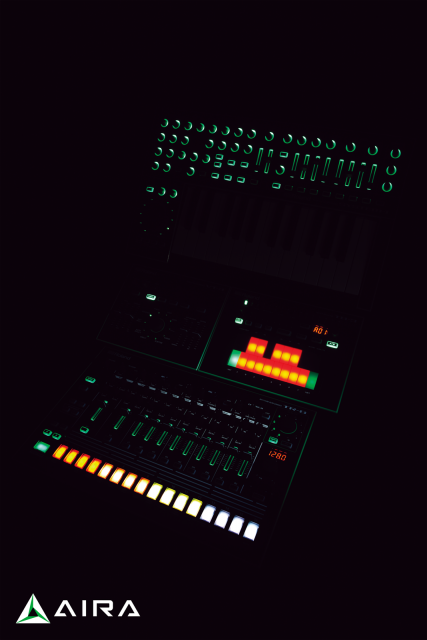Roland’s AIRA will be public this month, and you can bet CDM will have all the details we can get from the company.
But through its various teasers, the picture of AIRA is already pretty clear. The new line reflects a new approach for the company, one that would seem to show, paradoxically, both greater respect for the company’s legacy and greater interest in today’s tech tastes.
And most importantly, Roland has revealed their approach to new component modeling of analog circuits. That may not please analog purists, but it could be a way to balance the versatility of digital design with the sound quality of the originals. And we’ve been waiting for Roland to do complete component modeling for some time. It’s a field that has rapidly advanced – Native Instruments’ model of the Monark was a good recent example, incorporating the latest research in filter design. It’ll be interesting to see what Roland’s take might be. See the video here, if you watch no other. (Yes, while everyone puzzles over the darkened, tightly-cropped shots of cases and knobs, the video about modeling may give the greatest clue to how these actually sound, not only how they look.)
As seen here, you get two new pics, plus two new launch videos – one zooming in on the gear, one talking about the component modeling.
Here’s what we now know:
1. There’s a keyboard in the range, too. (it’s clearly revealed in the latest video, complete with lots of hands-on controls)
2. There are four models. The TR-08 drum machine had already leaked, as did a VT-3 Vocal Transformer. Now we know about the keyboard. The fourth and final Cylon – um, sorry, the fourth and final AIRA – isn’t out yet, but you might guess… sorry, I have two tabs open, and I can’t hear you over that bassline pounding in the launch video or the guy speaking in Japanese about how a TB-303 works. (V-accordion sound module, maybe? A remake of the Roland C-330 organ? I just can’t figure it out.)
3. There’s a new analog modeling method. In previous articles, I speculated about the range of possible paths Roland might have taken, from re-releasing analog circuits (as KORG, Moog, and others have done), to using an existing modeling method incorporating PCM.
Now we know that Analog Circuit Behavior (ACB) is central. Roland describes this as true, component-by-component modeling of analog circuitry. That would differ from the previous SuperNATURAL approach to sounds, which mixed models with PCM samples. Here, Roland describes what sounds like a whole new design process: “It utilizes original design specs, consultation with original engineers, and a detailed, part-by-part analysis of each analog circuit in Roland’s own pristine units.” See the full video below.
4. You can actually see the old 808 colors in the backlights of the buttons. Alas, the color scheme of AIRA wasn’t only inspired by Matrixsynth.
And some forensic work done on that image (not by us, and data already in the image) reveals a whole lot more. Cool.
Okay, I’m out. No more teasers. The next time we talk, I’ll have official details – and hopefully some extra information, of course.


